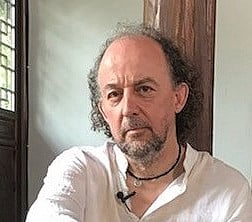Post war Theatre
Description
Vocal Characteristics
Language
EnglishVoice Age
Middle Aged (35-54)Accents
British (General)Transcript
Note: Transcripts are generated using speech recognition software and may contain errors.
the mid century amid the wreckage of that war on the consequent division of Europe into eastern and Western blocs to significant figures emerged who are central to this storey bettered bashed, who had already been influential in the decades before the war on DH. A little later, yes, Godowsky Brushed had developed his work in Germany between the wars. He was part of the rich artistic world that flourished amid the political, social and economic chaos that followed Germany's defeat in the first World War. His radical politics made it necessary for him to flee the Nazi government on. He found refuge during the war, first in Europe, then America. When he was able to return to his homeland after the defeat of the Nazi government. It was to the communist east of Germany under Soviet occupation that he chose to go there. He established a Berliner ensemble about which David Bonnet rights in this volume, the work of the Berliner Ensemble and Brexit plays, many of them written when he was in exile, became a template for artists wanting to develop politically engaged contemporary performance. His approach can be seen as an important and necessary counterbalance to tendencies in the work ofthe Capo and Stanislavsky, who at least a times sought escape from the realities of contemporary urban life. The very reality is experienced by the audience for whom their performances were being made. Breasts, political engagement, Andi requirement. His work made of its audience, that they engage ethically and politically with the unfolding of a performance, rather than adopting a passive role as their to consumers wass in itself. Inspirational to, among others, Joan Littlewood and Peter Brook, Daria Foe and August Awhile in the U. S. To Brexit political commitment. Wass influential Theodore Shank, writing about the development of what he calls Theatre of Social Change, suggests that brush displays and theoretical writings were especially important for demonstrating an aesthetic involving social analysis. While breast writing wass enormously influential, less attention was paid to his approach to directing, which, as David Bonnet explores in this volume, was intimately tied up with the notion ofthe ensemble. That Breast made a commitment to working with an ensemble is entirely consistent with the demand his vision off Theatre made. He sought a shared political aesthetic understanding from the performers, a shared training on the sophisticated engagement by the entire cast with all aspects of the ensemble performance, as opposed to an engagement primarily with the intricacies ofthe individual character. His approach to directing on Drea writing his own scripts, sort continual input from those around him on was highly collaborative. All these attributes are elements common to a range of ensemble. Practise is explored in this book elements which more mainstream practises relying as they do on the temporary gathering together of disparate individuals within defined and hierarchical power relationships struggle to achieve.
